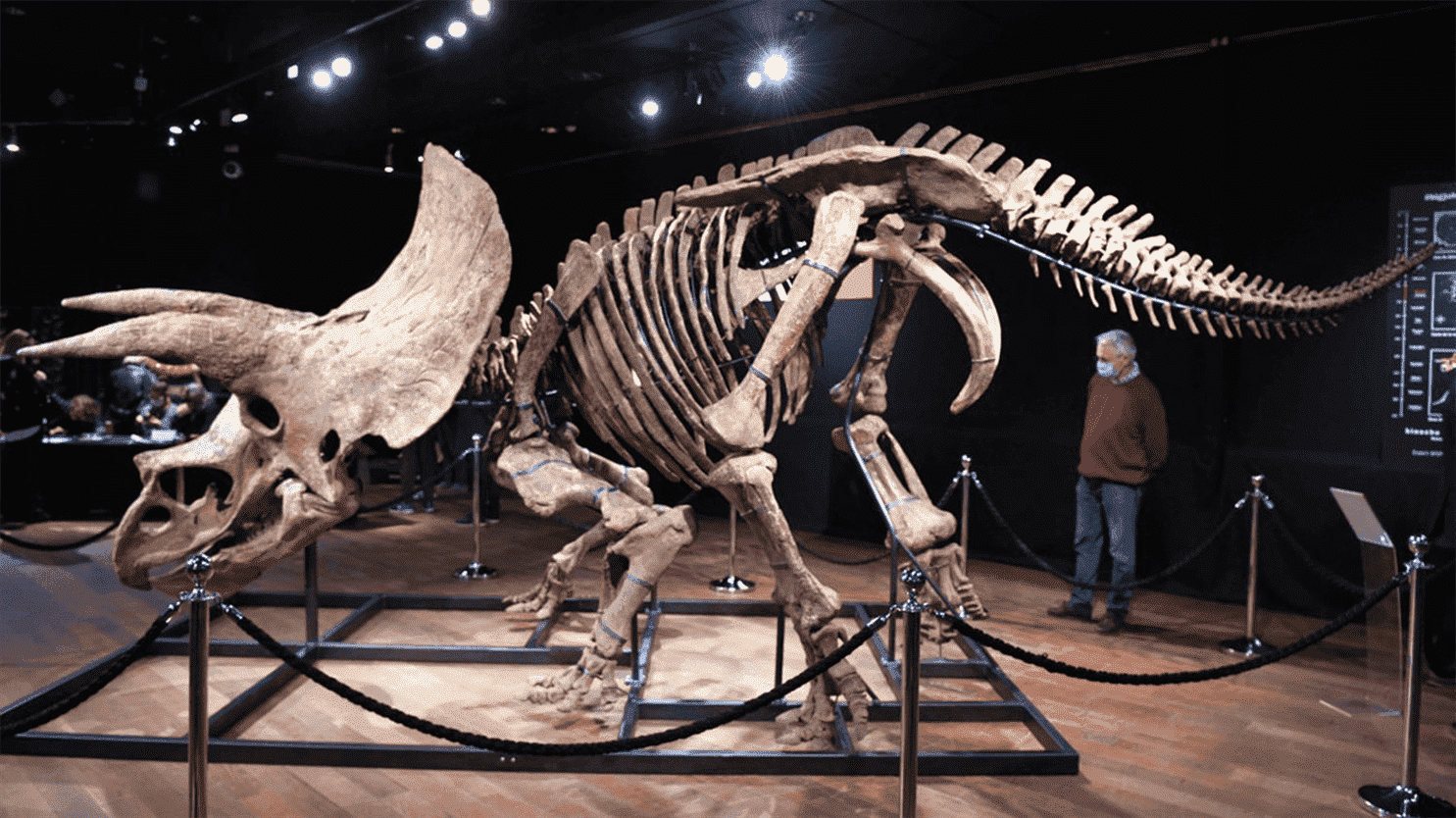Discovered in 2014 in South Dakota in the United States, it displays extraordinary proportions, with a skull 5 to 10% larger than other specimens. It is estimated between 1.2 and 15 million euros, but the final auction could significantly exceed these figures.

Posted
Update
Reading time : 1 min.
The sale takes place Thursday, October 21, at 3 p.m., at the Drouot hotel in Paris, the beast is called Big John. And this is the largest triceratops discovered to date. It is 8 meters long, three high, for 650 kilos of bone and two horns over a meter. A large gash on his collar testifies to the violence of the fights he had to face against his peers, but according to paleontologists who were able to study him before the sale, that was not what killed him, but the climatic conditions of the time. Big John died about 66 million years ago, and his skeleton was lifted from the earth in South Dakota (USA) in 2014: a total of 200 bones, including the skull 5 to 10 % larger than other known triceratops.
The Drouot auction house estimates it between 1.2 and 1.5 million euros, and obviously expects much more. By comparison, in 1997, the T-Rex Sue had gone for $ 8.4 million; last year Stan reached $ 31.8 million; and every year, rich buyers raise prices to appropriate these pieces of history that are dinosaur fossils, witnesses of a past unknown to humans and proof of the inevitable finitude of existence.
Dinosaur fossils have become objects of art like any other, good for speculation. And that infuriates paleontologists and museum curators who say they are tired at the idea of seeing another specimen escape the public eye.
Because, like others, Big John will undoubtedly end up with a private individual. “What is sad, confides paleontologist Francis Duranton to AFP, is that we can not compete, these prices represent 20 to 25 years of acquisition budget“. The only possible option for museums, therefore, remains that of donations, or loans of fossils from anonymous or companies. object like any other, that it is part of our natural heritage and that its place is therefore in a museum.
